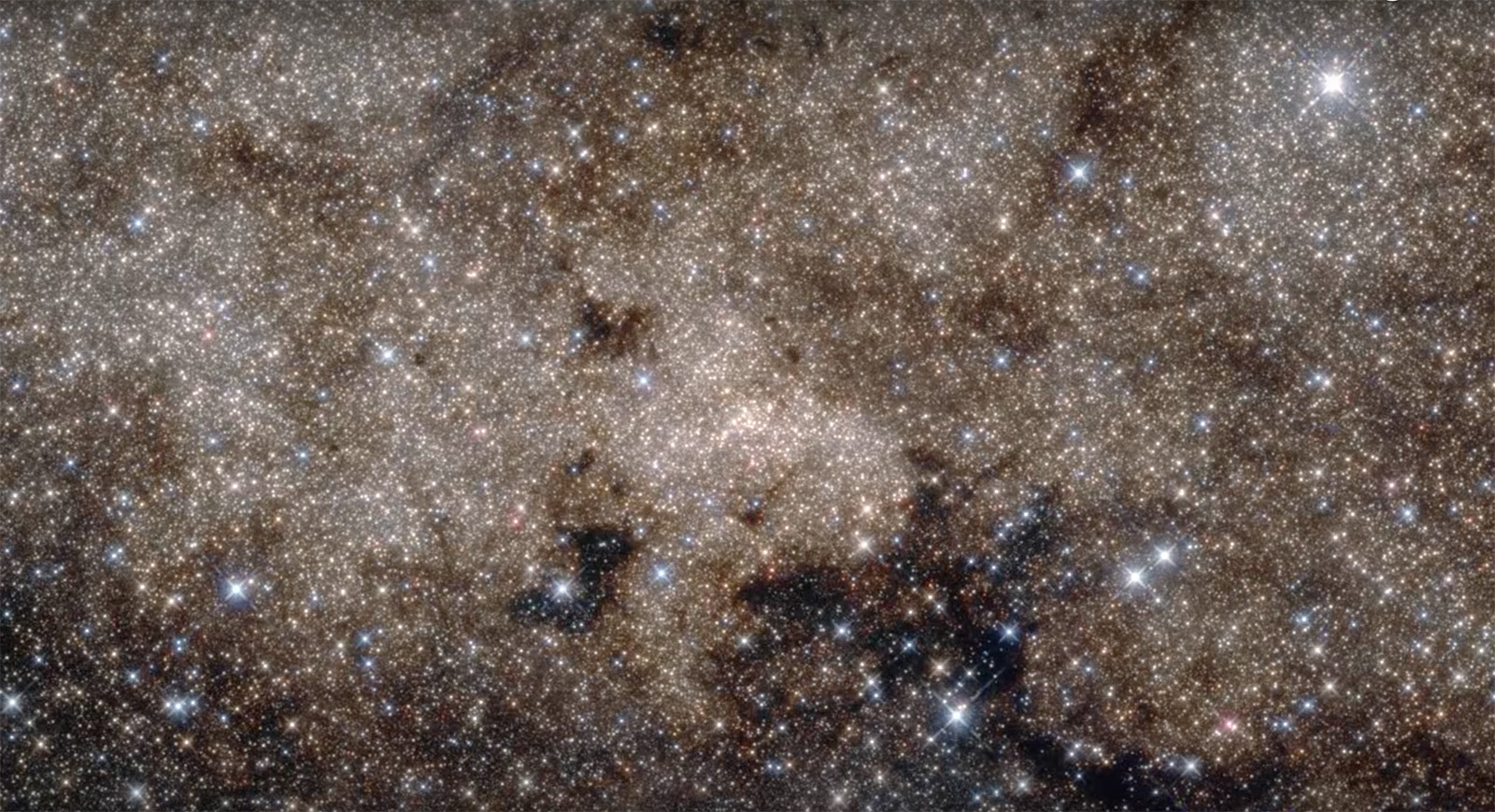Stars’ elements generate scientific debate between fellow astronomy researchers

(Courtesy of ESA/Hubble)
By Stephen Liu
Oct. 22, 2018 1:27 a.m.
UCLA researchers in the physics and astronomy department published a paper in February claiming stars in the center of the galaxy are rich with metals, offering a potential new theory about the creation of elements in the universe.
However, Michael Rich, another researcher in the physics and astronomy department, published a new study suggesting the discovery was wrong earlier this month.
“Of course, it is not a pleasant thing to have to publish a paper in which you say that a colleague is wrong,” Rich said.
Brian Thorsbro, one of Rich’s collaborators in the new paper and a researcher at Lund University in Sweden, said studying a star’s elemental composition can allow astronomers to tell how old it is. Hydrogen in a star fuses into helium, which can then fuse into heavier elements. Supernovas eject these elements into space, and they can then mix with other elements from other stars before forming a new star.
“When you put all this together, you can kind of come up with (a) formation process or evolution of the galaxy,” he said.
To determine the elemental makeup of stars, astronomers separate light into its spectrum of different wavelengths with an imaging technique called spectroscopy. Each element emits a unique pattern on this spectrum, revealing their presence in those stars.
Tuan Do, a researcher in the physics and astronomy department, and his colleagues reported detecting strong spectral signals for scandium, vanadium and yttrium from stars in the center of the galaxy. Usually, stronger signals means a higher abundance of an element in the star. However, Rich and his colleagues found that this is not always the case for scandium.
Rich said the spectral lines Do’s research team observed are very dependent on the temperature of the star. When the star is at colder temperatures, it can emit a greater proportion of scandium at a particular wavelength, which contributed to the strong signals measured and the appearance of high abundance of scandium, he said.
The researchers found the same strong signals in colder stars closer to Earth’s sun, showing that the pattern is not unique to the center of the galaxy, he added.
“(Their) paper has much larger implications than the authors realized,” Rich said. “That could be a Nobel Prize in Physics actually if it were right, no joking.”
Do said the theory presented in his paper was based on his research team’s knowledge and their understanding of spectroscopy at the time.
“(Rich and his collaborators at Lund) started working more on the physics of the atomic transitions that create these absorption lines that we see,” Do said. “They found that (the models) we were using before may not be as accurate as you might want for these kinds of stars.”
Rich said he thinks his and Do’s methodologies are complementary. Do’s team used a telescope technology called adaptive optics to distinguish stars close together in the very center of the galaxy. Without adaptive optics, different stars would look like one blurred object.
“(Do) can study right in the middle there,” Rich said. “He is able to get spectra of stars that we can’t, and that’s why we need to work together eventually.”
Rich added he thinks the new results will spur more research with infrared spectroscopy. Dust in space blocks wavelengths of light visible to the human eye from reaching Earth’s telescopes. Infrared light penetrates the dust and allows researchers to look further into the galactic center.
Thorsbro said many researchers have only done experiments for light in the visible wavelengths. Researchers at Lund measured the infrared spectrum of scandium in the laboratory, which allowed the astronomers to analyze spectra from the stars in the center of the galaxy.
He added he thinks researchers will need more laboratory measurements of spectra for infrared wavelengths to map out the elements in the center of the galaxy.
“One of the greatest things about this kind of study is that you can combine the biggest thing you have in the universe with the smallest things you have in the universe,” Thorsbro said. “Each of them can tell something about each other.”


